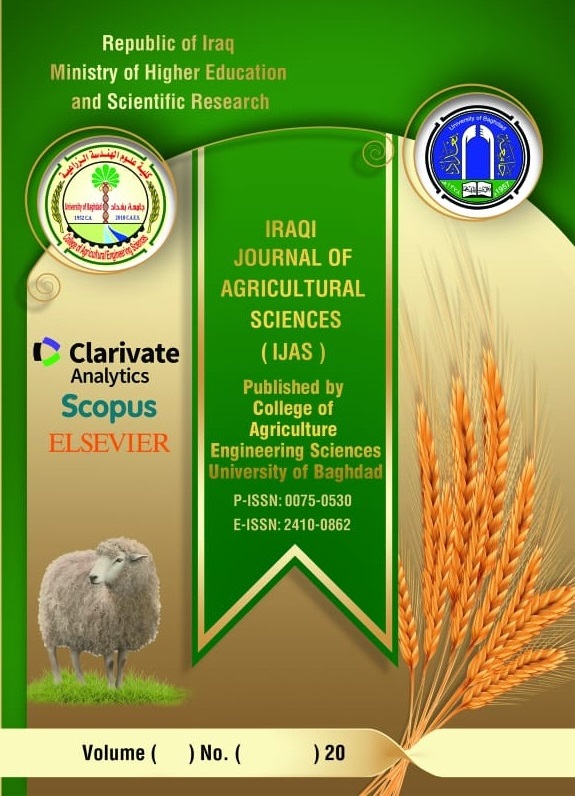Abstract
This study was aimed to test four types of different plants for the purpose of selecting the optimal plant as a source of the amylase enzyme, including wheat, barley, rice, and potatoes. Among these plants, wheat was selected as the best plant source for enzyme extraction because it possessed the highest effectiveness of the enzyme specific activity (3.0 U/mg protein). Furthermore, sodium acetate buffer (0.2 M, pH 6.0) was determined to be the optimal extraction buffer with a 1:5 (w:v) ratio after 75 min, and it provided 68 U/mg protein. The enzyme was concentrated with sucrose before being purified by gel filtration chromatography using Sephadex G-150. The results demonstrated a 1.8-fold increases in final purification folds with a 332% yield of enzymes. At pH 6.0, the purified enzyme showed its highest activity and stability. The activity of the purified enzyme was most effective at 45 °C and remained stable up to 37 °C. At concentrations of 5 and 10 M, various ionic and chemical substances had an impact on amylase.
Keywords
amylase
Extraction
optimum conditions
Sephadex G-150
stability
Abstract
هدفت الدراسه الحاليه الى اختبار اربعه انواع من نباتات مختلفه لغرض اختيار النبات الامثل كمصدر لانزيم الاميليز شملت الحنطه والشعير والأرز والبطاطا، ومن بين هذه النباتات، تم اختيار الحنطه كأفضل مصدر لاستخلاص الانزيم ، حيث امتلك اعلى فعاليه نوعيه لإنزيم الأميليز (3.0 وحدة / ملغم بروتين). كما تم اختيار محلول خلات الصوديوم (0.2 M ، pH 6.0) كأفضل محلول استخلاص بنسبه استخلاص1: 5 ( و: ح) بعد 75 دقيقة، حيث بلغت الفعاليه النوعيه 68 وحدة / ملغم بروتين. تم تنقية الإنزيم بواسطة كروماتوجرافيا الترشيح الهلامي باستخدام هلام سيفادكس ج-150 بعد التركيز بالسكروز. أظهرت النتائج زيادة في عدد مرات التنقية النهائية بمقدار 1.8 مرة بحصيله انزيميه مقدارها 332٪ . وأظهر الإنزيم المنقى أقصى نشاط وثبات عند درجة الحموضة 6.0. وكانت درجة الحرارة المثلى لنشاط الإنزيم المنقى 45 درجة مئوية ومستقر عند 37 درجة مئوية. تأثر الأميليز ببعض المركبات الأيونية والكيميائية بتركيز 5 و 10 ملم.
Keywords
استخلاص، اميليز، ظروف مثلى، سيفادكس ج-150، ثباتيه
